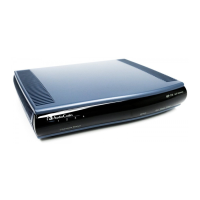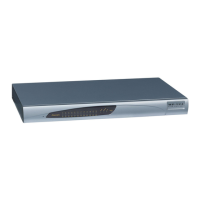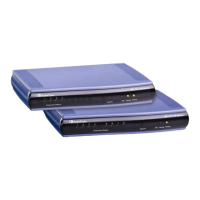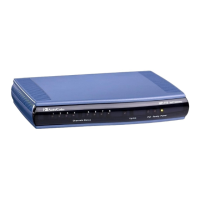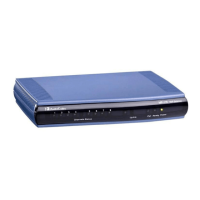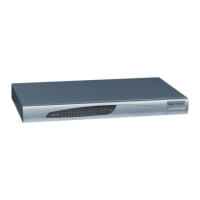SIP User's Manual 14 Document #: LTRT-12801
MP-500 MSBG
Figure 9-4: SBC Routing Process ........................................................................................................ 461
Figure 9-5: Classification Process (Identifying IP Group or Rejecting Call) ........................................ 463
Figure 9-6: IP-to-IP Routing Types ...................................................................................................... 464
Figure 9-7: SIP URI Manipulation in IP-to-IP Routing ......................................................................... 465
Figure 9-8: SIP INVITE (Manipulations) from LAN to WAN ................................................................. 465
Figure 9-9: Multiple Interface Table with "Voice" Interface Name ....................................................... 469
Figure 9-10: Applications Enabling Page ............................................................................................ 469
Figure 9-11: IPmedia Parameters Page .............................................................................................. 470
Figure 9-12: Configuring WAN IP Address in General Settings Page ................................................. 470
Figure 9-13: LAN and WAN Media Realms in SIP Media Realm Table .............................................. 470
Figure 9-14: SRDs for LAN and WAN in SRD Table ........................................................................... 470
Figure 9-15: LAN and WAN SIP Interfaces in the SIP Interface Table ............................................... 471
Figure 9-16: IP Group 1 (for Enterprise Users) in IP Group Table ...................................................... 471
Figure 9-17: IP Group 2 (for WAN ITSP) in IP Group Table ................................................................ 472
Figure 9-18: Proxy Sets Table Page .................................................................................................... 473
Figure 9-19: Configuring Classification Rule for USER IP Group in Classification Table ................... 473
Figure 9-20: IP-to-IP Routing Rules ..................................................................................................... 473
Figure 9-21: Configuring Port Forwarding for SIP Signaling ............................................................... 474
Figure 9-22: Configuring Static NAT .................................................................................................... 474
Figure 9-23: Survivability Example Setup ............................................................................................ 475
Figure 9-24: Configuring SIP Interface for PSTN (GW) ....................................................................... 476
Figure 9-25: Enabling Proxy Keep-Alive .............................................................................................. 476
Figure 9-26: Configuring IP-to-IP Routing Rules ................................................................................. 477
Figure 9-27: Manipulation of SIP URI Host Part .................................................................................. 478
Figure 9-28: Manipulation of SIP URI User Part .................................................................................. 479
Figure 9-29: SAS Routing in Emergency Mode ................................................................................... 481
Figure 9-30: Device's SAS Agent Redirecting Emergency Calls to PSTN .......................................... 482
Figure 9-31: FXO Device Interfacing between E911 Switch and PSAP .............................................. 484
Figure 9-32: FXS Device Emulating PSAP using DID Loop-Start Lines ............................................. 487
Figure 9-33: Call Flow for One-Stage Dialing ...................................................................................... 501
Figure 9-34: Call Flow for Two-Stage Dialing ...................................................................................... 502
Figure 9-35: Call Flow for Automatic Dialing ....................................................................................... 504
Figure 9-36: Call Flow for Collecting Digits Mode ............................................................................... 505
Figure 9-37: Double Hold SIP Call Flow .............................................................................................. 517
Figure 9-38: Call Forward Reminder with Application Server ............................................................. 520
Figure 9-39: SIP Call Flow ................................................................................................................... 527
Figure 9-40: Assigning Phone Numbers to Device 10.2.37.10 ........................................................... 532
Figure 9-41: Assigning Phone Numbers to Device 10.2.37.20 ........................................................... 532
Figure 9-42: Routing Calls Between Devices ...................................................................................... 533
Figure 9-43: Routing between ITSP and Enterprise PBX Example .................................................... 534
Figure 9-44: Configuring Proxy Set ID #1 in the Proxy Sets Table Page ............................................ 535
Figure 9-45: Configuring IP Groups #1 and #2 in the IP Group Table Page ....................................... 536
Figure 9-46: Assigning Channels to Hunt Groups ............................................................................... 536
Figure 9-47: Configuring Registration Mode for Hunt Groups and Assigning to IP Group .................. 536
Figure 9-48: Configuring Username and Password for Authenticating Channels 5-8 ......................... 537
Figure 9-49: Configuring Account for Registration to ITSP 1 in Account Table Page ......................... 537
Figure 9-50: Configuring ITSP-to-Hunt Group Routing in IP to Hunt Group Table Page .................... 537
Figure 9-51: Configuring Hunt Group to ITSP Routing ........................................................................ 537
Figure 9-52: FXO-FXS Remote PBX Extension (Example)................................................................. 538
Figure 9-53: MWI for Remote Extensions............................................................................................ 540
Figure 9-54: Call Waiting for Remote Extensions ................................................................................ 540
Figure 9-55: Assigning Phone Numbers to FXS Endpoints................................................................. 541
Figure 9-56: Automatic Dialing for FXS Ports ...................................................................................... 541
Figure 9-57: FXS Tel-to-IP Routing Configuration ............................................................................... 541
Figure 9-58: Assigning Phone Numbers to FXO Ports ........................................................................ 542
Figure 9-59: FXO Automatic Dialing Configuration ............................................................................. 542
Figure 9-60: FXO Tel-to-IP Routing Configuration .............................................................................. 542
Figure 10-1: NAT Functioning .............................................................................................................. 543
Figure 10-2: Multiple Network Interfaces ............................................................................................. 547
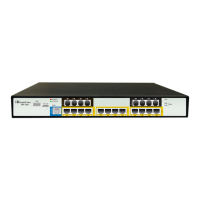
